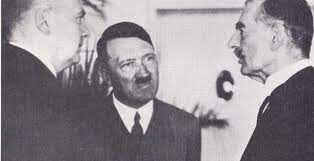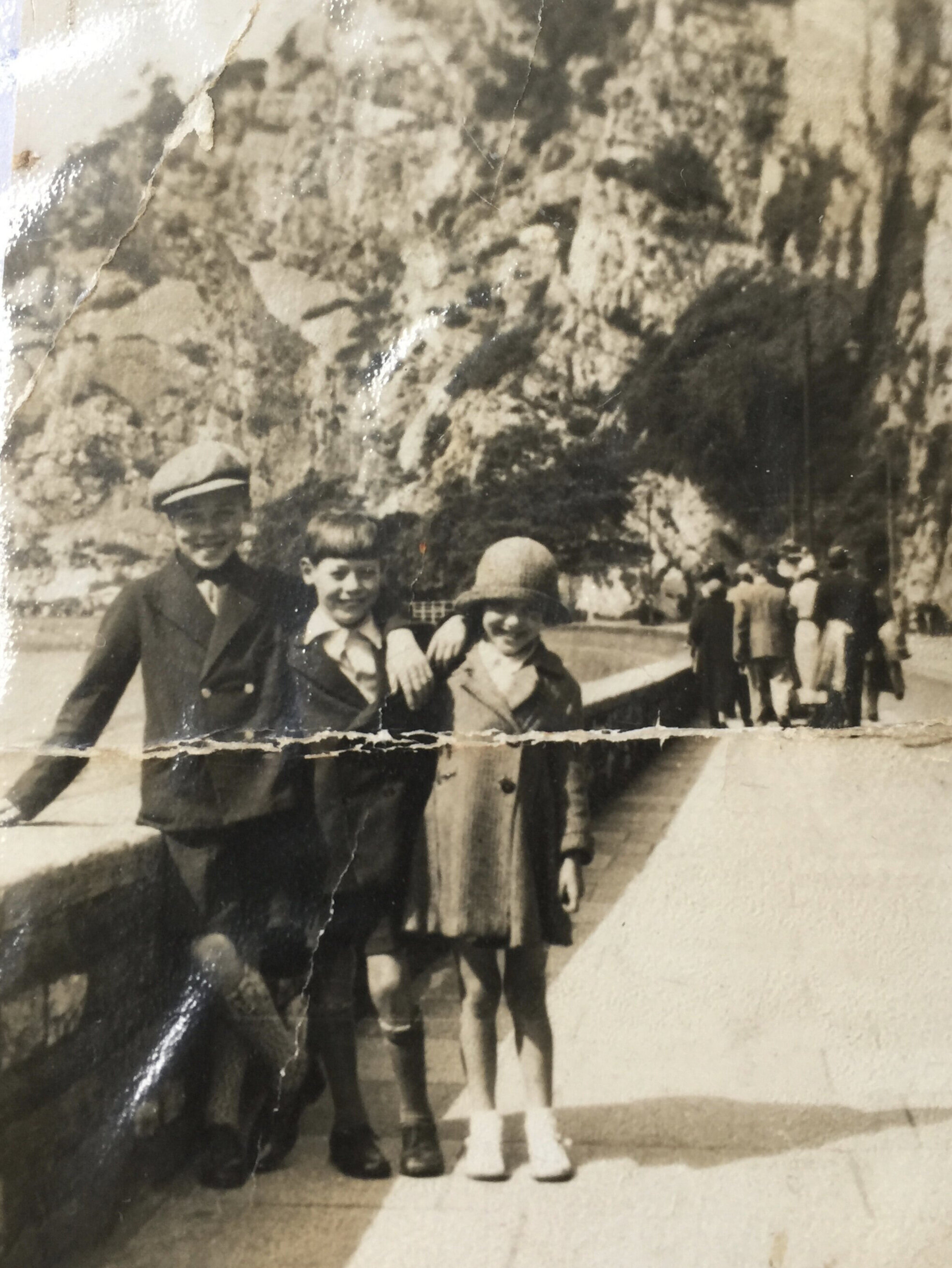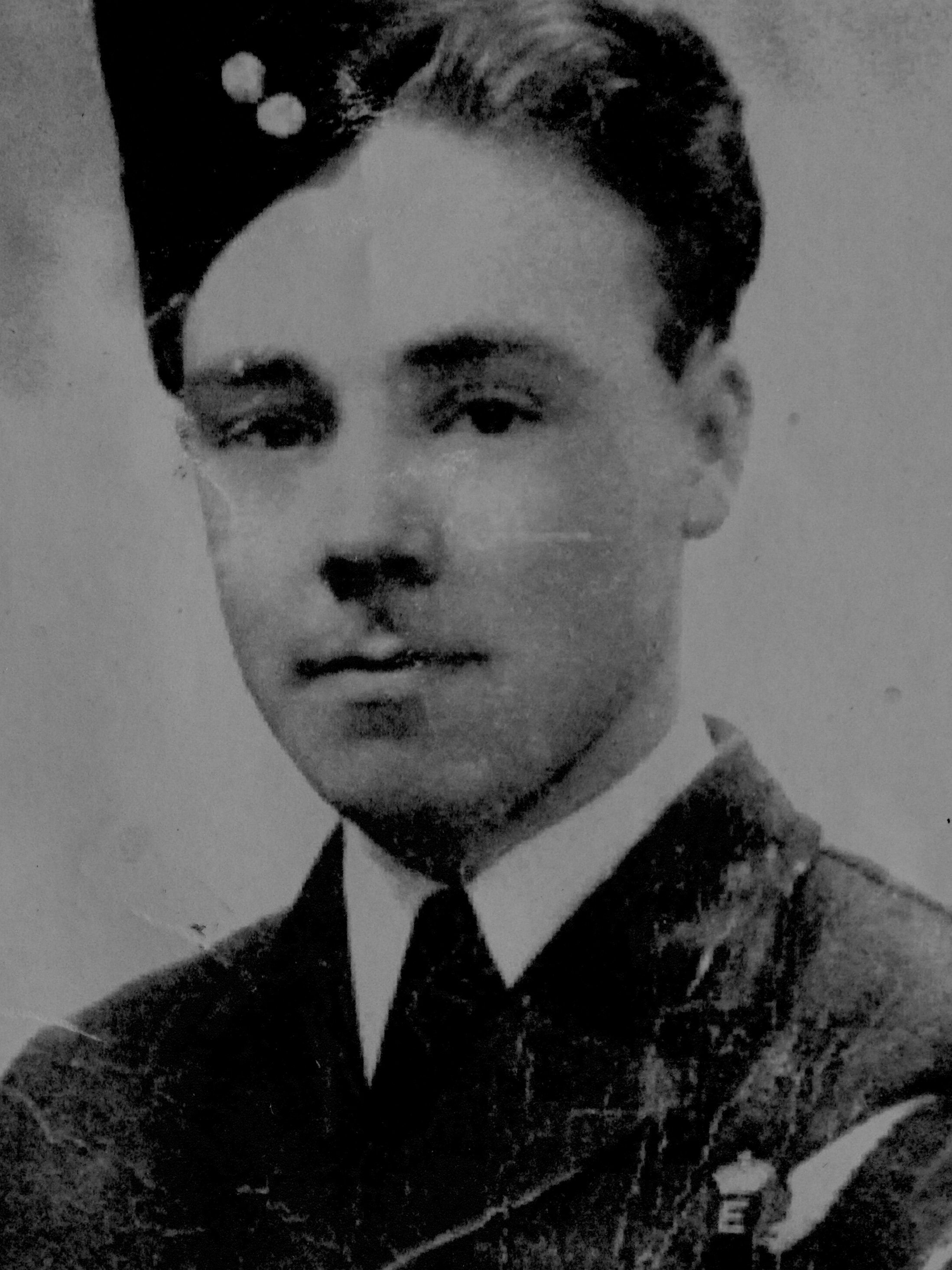WßD ~ Chapter 21 : Elmfield Road Days (Revised Edition)

Windsor Street Days
Chapter Twenty-One
Elmfield Road Days
Part IV
THE MUNICH CRISIS
Harry (12), Tom (10) and Nancy (8) on holiday circa 1935
Flight Sergeant Harry Alfred Marshall RAF VR Flight Engineer ~ Elite Pathfinder Force circa 1943
Part I
HARRY ALFRED MARSHALL was born on Monday, April 9, 1923, at 9 Selbourn Street, South Shields, Durham, to Martha Isabella Marshall and Frank Ewart Marshall, the eldest of six children and named Harry in memory of his father’s brother who had died in October 1918 as a prisoner-of-war.
As war loomed and we entered what is now called The Munich Crisis 1938, Harry (junior) joined the Air Defence Cadet Corps shortly after its formation in 1938, aged 15.
The A.D.C.C. (as it became known) grew quickly and efficiently, providing a vital means of recruiting RAF personnel – identifying potential ground-crew and aircrew quickly and efficiently, and thereby enabling RAF training policy to become solid, dependable, ambitious and decisive.
Unlike my father's brother, Ken - whose name I bear - the family archive does not contain as much written information about my mother’s brother, Harry; but the family anecdotes are many, and I will incorporate these within this third part of Windsor Street Days and which, as a family, we rightly address as Elmfield Road Days.
*
AS THE crow flies, Elmfield Road and Windsor Street are around 90 seconds apart; I am literally envisaging the speed of the crow. On a bicycle it is about eight minutes, 12 minutes against the wind.
Two families unknown to each other. Two families both watching, with alarm, the Munich crisis in September 1938, and the "peace for our time" piece of paper on Prime Minister Chamberlain’s famous – perhaps now, infamous – return from ‘my meeting this morning with Herr Hitler.’
Two families. Two young men. Teenagers, 18 months between them.
On the family’s Imperial typewriter one writes to his mum from 25 Windsor Street that he is joining the RAF ‘and sending newspaper cuttings, mum, won't change my mind’; and the other, at 36 Elmfield Road, does not so much write, but takes positive and decisive action of his own, promptly making his way to the recruiting office to enrol as a probationer cadet in the newly formed Air Defence Cadet Corps.
The Air Defence Cadet Corps
Formed by Air Commodore Chamier in 1938.
Part II
WE DECLARED war on Germany at 11.15am on a pleasant early Autumn Sunday, September 3, 1939, a fact that took Corporal Hitler somewhat aback, something he had not seriously factored into his grotesque plans for subjugation and annihilation of entire peoples and the enslavement of millions more.
Air Training Corps
Formed April 1st, 1941 from the earlier Air Defence cadet Corps, and, as had the ADCC, so too the ATC, became an absolutely vital part of the War Effort.
HM King George VI and HM Queen Elizabeth the Queen Consort visiting the London East End during the Blitz 1940-1941 . Image is by courtesy of Guardian com
On April 1, 1941, the Air Defence Cadet Corps became the Air Training Corps, fully incorporated into the Royal Air Force structure, this incorporation being underlined by its officers being granted the King’s Commission for service within the Royal Air Force Volunteer Reserve.
The King’s Commission is powerful in its reading, and I use the text herein from the Queen’s Commission granted to me on May 28th, 1974 for service with the Air Training Corps.
Part III
George VI, by the Grace of God OF THE UNITED KINGDOM OF GREAT BRITAIN AND NORTHERN IRELAND AND OF HIS OTHER REALMS AND TERRITORIES KING, HEAD OF THE COMMONWEALTH AND EMPIRE, DEFENDER OF THE FAITH.
To Our Trusty and well beloved … Greeting:
We, reposing especial Trust and Confidence in your Loyalty, Courage and good Conduct, do by these Presents Constitute and Appoint you to be an Officer in Our Royal Air Force Volunteer Reserve from the the 1st day of April 1941. You are therefore carefully and diligently to discharge your duty as such in the rank of Pilot Officer or in such other rank as We may from time to time hereafter be pleased to promote or appoint you to and you are in such a manner and on such occasions as may be prescribed by Us to exercise and well discipline in their duties such Officers, Airmen and Airwomen as may be placed under your orders from time to time and use your best endeavours to keep them in good Order and Discipline.
And We do hereby Command them to Obey you as their superior Officer and you to Observe and follow such Orders and Directions as from time to time you shall receive from Us, or any superior Officer, according to the Rules and Discipline of War, in pursuance of the Trust hereby reposed in you.
GIVEN at Our Court, at Saint James’s the First day of April 19 41 in the Fifth Year of our Reign
By His Majesty's Command.
Part IV
By then, Cadet Marshall was making fast progress and honing his aeronautical and engineering skills, and by the time the RAF VR recommended his transfer to the coveted volunteer reserve of the Regular Royal Air Force, Harry had attained the rank of cadet sergeant in the 125 (Cheltenham) Squadron [i] of the Air Training Corps.
Harry joined the Royal Air Force Volunteer Reserve, his service number being 1337884, and immediately commenced aircrew training as a flight engineer.
This is now Harry’s story.
So from hereon I will make no reference to Ken Webb save that Ken’s serial number 1315766 confirms that between these two young men there are just 24,118 personnel. That, in total war, with the fatality rates sustained within RAF Bomber Command and which claimed the lives of them both, is a very small margin indeed.
Harry’s Engineer’s Wing returned to the family with his personal effects in 1945 by the Royal Air Force from RAF Gransden Lodge, Cambridgeshire, United Kingdom
Part V
I am often asked why I write as Marshall and not Webb.
The reason is simple.
My two uncles set the course upon which my own life would fly. I am named after my father’s brother, and this was my way of honouring my mother’s brother, and my mother.
In researching their lives, in researching World War II, in researching the Royal Air Force and the United States Air Force, one thing became apparent. Ken’s war was comparatively short and brutal, ending over Germany on April 16-17, 1943.
Harry’s war was long, very violent, as all air war was in the Strategic Air Offensive, likewise ending brutally and abruptly during a mission to Zeitz when, on January 16-17, 1945 two Avro Lancasters, still fully laden, collided over the small town of Pfaffenhausen.
Part VI
Before I venture onto my Uncle’s RAF career, I'd like to give a brief pen picture of a young man, the eldest of six, and my mum's closest friend in those terrifying years of total war. Life is difficult in these pandemic times. But compared to the war years and the years leading to war, they pale. But because that is now even beyond the lifespans of middle-aged TV presenters, it is beyond the reach of the general public to comprehend.
I will continue Harry’s Story in Chapter 23.
23 April 2024
All Rights Reserved
LIVERPOOL
© 2024 Kenneth Thomas Webb
Last published 10 May 2022
Note
Kenneth .T. Webb
Flight Lieutenant RAF VR Rtd
First Written 29 May 2021
[i] In my 21 years service with the Royal Air Force Volunteer Reserve, I was privileged to command three Squadrons and enable my squadron’s detached flight in Tewkesbury to also achieve squadron status and which is now the 785 (Tewkesbury) Squadron RAF AC ATC. For me, the greatest personal achievement was to be invited to my third command, namely, the 125 (Cheltenham) Squadron of the Air Training Corps in 1990-1991. As I have noted elsewhere, I could never quite get over that I was now serving on my Uncle’s squadron. Likewise, that imagined conversation. Hey, Harry, I know you won’t get to meet him, but take heart, your nephew will be our Squadron’s CO in about 47 years from now!
Flt Lt K.T. Webb RAF VR(T) Officer Commanding 125 (Cheltenham) Squadron 1990
Shoulder Epaulettes retained by me from working uniform dress upon retirement in 1991
Ken Webb is a writer and proofreader. His website, kennwebb.com, showcases his work as a writer, blogger and podcaster, resting on his successive careers as a police officer, progressing to a junior lawyer in succession and trusts as a Fellow of the Institute of Legal Executives, a retired officer with the Royal Air Force Volunteer Reserve, and latterly, for three years, the owner and editor of two lifestyle magazines in Liverpool.
He also just handed over a successful two year chairmanship in Gloucestershire with Cheltenham Regency Probus.
Pandemic aside, he spends his time equally between his city, Liverpool, and the county of his birth, Gloucestershire.
In this fast-paced present age, proof-reading is essential. And this skill also occasionally leads to copy-editing writers’ manuscripts for submission to publishers and also student and post graduate dissertations.














